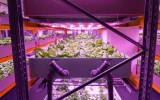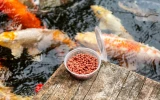What To Feed Tilapia in Aquaponics & How Much?
Tilapia, a delicious and fast-growing fish species, is a common option in aquaponics because it feeds on a variety of foods. If you’re into breeding tilapia, here’s what you can feed them and how much should you give.
Aquaponics-grown tilapia can be fed pelleted food, organic foods, and tilapia feeds such as bran chaff, pomace, cereal, oil cake, and animal feed such as a fish meal. They can be fed 2 or 3 times a day with 20 grams of feed per square meter of growing area.
Make sure that all feeds are consumed within 5 minutes of feeding. Scoop out any feed that's left to avoid overfeeding. To learn more about the food varieties consumed by these fish species, keep reading below.
Summary
- The common food sources for tilapia grown in aquaponics are pellet food; organic food like duckweed, cassava plants, lengko plants, sweet potato plants, lettuces, and cocoyam leaves; and other types of feed such as bran chaff, pomace, cereal, oil cake, and animal feed such as a fish meal.
- To know how much feed is required for your tilapia in aquaponics, use the formula 20 g of feed per square meter of deep-water culture growing area to calculate the amount of feed you need.
- The frequency of feeding your tilapia must be around 2 -3 times. Adjust this frequency if the fish cannot consume all the feeds in 5 minutes.
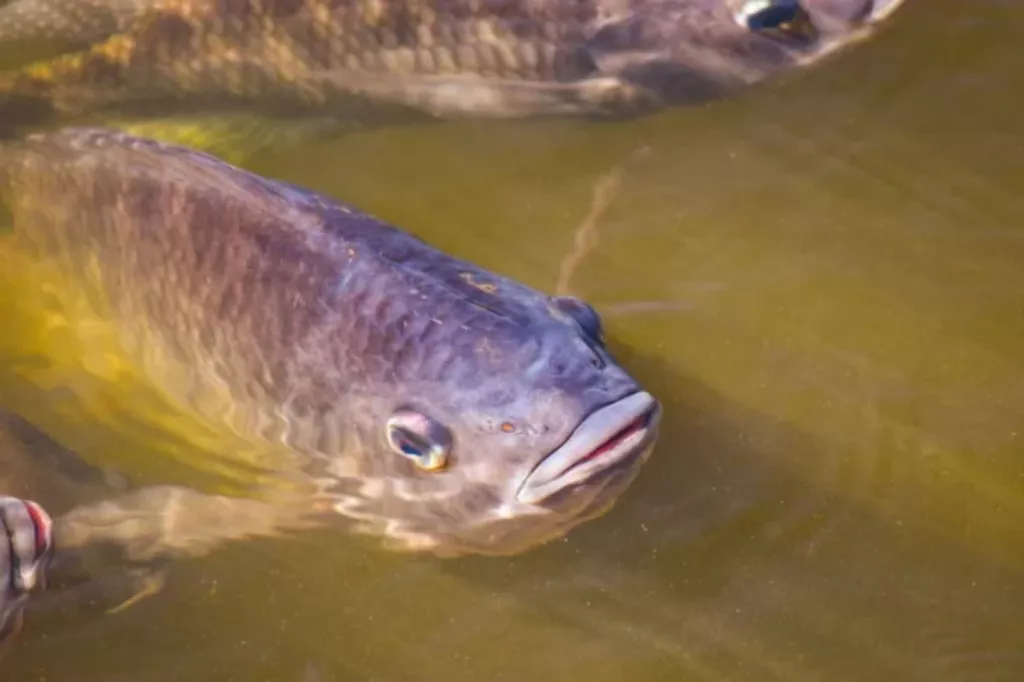
On this page:
Tilapia Feeds on a Variety of Food Options
Tilapia grown in an aquaponics system can be fed with the following:
Adult tilapia can be fed with food pellets
To enable the good and consistent growth of fish, factors such as food, water condition, temperature, and light must be supplied. Aquaponics fish don’t get enough food nutrients as compared to when they are in their natural habitat. For this reason, they must be fed fish feed, such as pellets.

Pelleted foods comprise mainly protein, fats, minerals, and vitamins. These can be fed to both adult tilapia and newly hatched fry. However, when you feed the new hatchlings, break down the pellets into smaller pieces.
Tilapia also prefers organic feeds
If you want your aquaponics system to be all organic, you can opt to feed your tilapia fish organic feed. Some common examples are cassava plants, lengko plants, duckweed, sweet potato plants, lettuce, and cocoyam leaves.
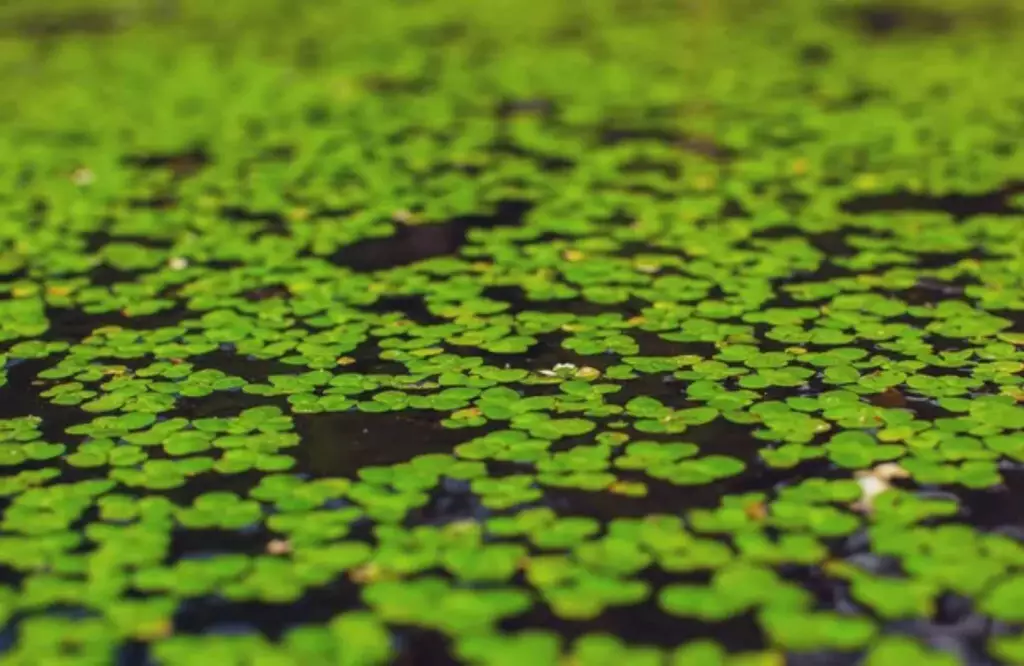
Duckweed plants can be fed to all sizes of tilapia, whether adult or newly hatched because they are very small. Since all of these are plant-based, you can increase the protein content of these feeds by combining them with other commercial fish food.
Tilapia can be fed with different types of fish feed
Other types of feed that can be combined with other feeds to maintain a balanced diet for your fish include:
- Bran chaff feed, such as white bran or wheat bran
- Pomace feed, such as grape pomace
- Cereal feeds such as rice sprouts and malt
- Oil cake feed such as rapeseed meal, cottonseed meal, or soybean meal.
- Animal feeds such as blood meal, meat and bone meal, and fish meal

Tilapia is a popular choice on fish farms because they are easy to take care of and they are quick-growing types of fish. They can tolerate sudden changes in water conditions, and they have a high market value.
These fish are also cultivated in aquaponics settings, either indoor cultivation or a large outdoor setup. They grow well with plants because they produce plenty of fish waste. At the same time, they can survive even when the water quality is poor.
Aside from their tolerance to many harsh conditions, what makes tilapia a profitable fish in aquaponics is its mild, delicious taste, which is perfect as a stand-alone dish, cooked in a variety of ways.
They are also edible and have a delectable taste highly favored by many people in different parts of the world. Their tasty meat is mainly attributed to their wide range of diets since tilapia can feed flexibly on a variety of food options.
How Much Do You Feed Tilapia in Aquaponics?
You can calculate the amount of required feed by using the formula: 20 g of feed per square meter of deep-water culture growing area.
The frequency of feeding the fish should be 2–3 times a day to encourage a steady digestion rate. However, you can adjust this frequency when you notice that the fish cannot consume the feed within 5 minutes.
If your tilapia don’t look hungry and are not eating the feed, scoop out the feed and avoid feeding them. After all, they can survive for weeks without food. If you have just started raising tilapia in aquaponics, keep feeding to a minimum during the first 1–2 months.
These monitoring techniques can avoid overfeeding your fish. Any excess food may clog the water drains and affect the quality of your water. The key to having a good aquaponics system is to keep the balance between fish and plants.
When you put the feed into the system to sustain the fish's needs, they consume the feed and produce ammonia. This ammonia is converted to nitrate by the nitrifying bacteria. The converted nitrate is absorbed by the plants to help them grow. Because of this recirculating pattern, it's necessary to balance the right amount of feed added to the aquaponics system.
The Nutrient Requirements of Tilapia
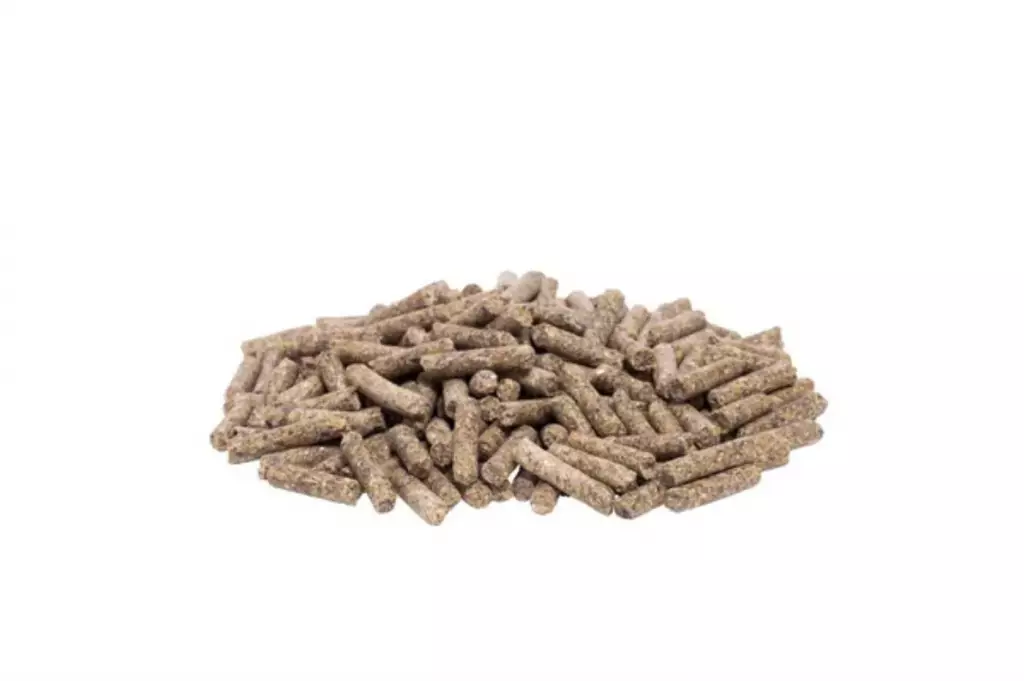
To estimate how much feed your tilapia requires, try understanding their feeding behavior and preferences. Various species of tilapia have different feeding preferences. Also, each stage of development in a growing tilapia has a different feeding behavior.
There are three popular, fast-growing species of tilapia: Nile tilapia, Mozambique tilapia, and blue tilapia. Their feeding preferences are as follows:
- Nile tilapia prefers detritus and phytoplankton.
- Mozambique tilapia feeds on vegetation and bottom algae.
- Blue tilapia likes detritus and zooplankton.
When it comes to the different stages of tilapia development, their feeding behavior changes as follows:
- Newly hatched tilapia (fry) are known to be detritus and neuston feeders. They feed on tiny, water-floating organisms.
- The juvenile tilapia (fingerlings) are omnivores. They feed on both plants and plant materials like duckweed, and animals such as worms and insects.
- Adult tilapia are mostly herbivores. They feed on plants such as duckweed and other food sources like algae, detritus, and even bacterial slime.
When you know the natural preferences and nutrient requirements of your aquaponics fish, you also get to know what kind of feed to supply them.
Blue tilapia fingerlings require a protein content of about 36%. Meanwhile, its adult counterpart requires about 26%–36% protein content. The nutrient requirement of Nile tilapia varies from this one, as fry and fingerlings of this species require a diet with 30–40% protein content, 30–35% for juveniles, and 28–30% for growing adults.
